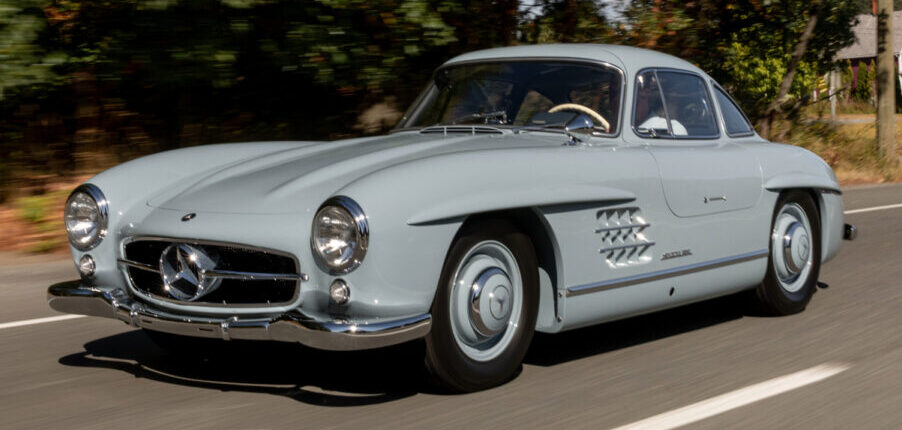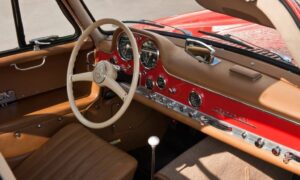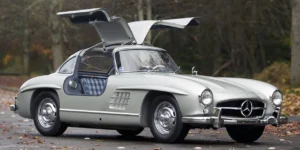Mercedes 300SL a symbol of German automotive rivalry and legacy
1. Bringing together the Silver Arrows
2. Auto Union: A complex legacy of German innovation
3. Daimler-Benz’s strategic moves
4. Audi’s resurgence and the Audi AG of today
5. The 300SL: A shining ambassador for Mercedes-Benz
6. The 300SL roadster: A masterpiece of design and engineering
7. Innovative features and technical advancements
8. Racing heritage and legacy of the 300SL
Bringing together the Silver Arrows
The history of German automotive brands is filled with intriguing twists, and one of the most fascinating chapters comes from the rivalry-turned-partnership between Daimler-Benz and Auto Union. These two companies, once bitter rivals in pre-war racing, found themselves on the same side when Daimler-Benz acquired a majority stake in Auto Union in 1958. This acquisition would set the stage for an unexpected collaboration that reshaped the automotive landscape.
Auto Union: A complex legacy of German innovation
Auto Union was established in 1932 as a merger of four distinct brands: Horch, Wanderer, Audi, and DKW. Each of these companies brought unique expertise to different sectors of the market. However, with the end of World War II, most of Auto Union’s factories were situated in East Germany, prompting the creation of a new company in Ingolstadt. Initially, only DKW was revived, but this would evolve into a much more significant story in the years that followed.
Daimler-Benz’s strategic moves
In December 1959, Daimler-Benz secured full control of Auto Union, marking the beginning of a new era for both companies. While Daimler-Benz also showed interest in acquiring BMW, this deal never materialized. Nevertheless, Daimler-Benz nurtured the Auto Union name before selling it to Volkswagen in 1964. Volkswagen brought back the Audi name and, over time, merged it with NSU, which had pioneered the use of the Wankel rotary engine. This engine would captivate not only Volkswagen but also Daimler-Benz, further intertwining their futures.
Audi’s resurgence and the Audi AG of today
Today, Auto Union lives on through Audi AG, with its cars proudly displaying the four-ring emblem first introduced on the pre-war race cars designed by Professor Ferdinand Porsche. Audi is still a part of the Volkswagen Group, which is currently in talks to merge with Porsche, creating an intricate web of connections among these powerhouse brands. The history of Auto Union is truly a testament to the evolving and intertwined nature of the German automotive industry.
The 300SL: A shining ambassador for Mercedes-Benz
The 300SL was a stunning representation of the Mercedes-Benz brand, particularly in the American market. While the 190SL was more successful in showrooms, the “Gullwing” 300SL became a symbol of automotive luxury and innovation. However, the production of the Gullwing was expensive, and Mercedes-Benz recognized the need for a more practical version of the iconic car. This led to the creation of the 300SL Roadster (Type W198 II), which would become a key model in the brand’s legacy.
The 300SL roadster: A masterpiece of design and engineering
Introduced at the 1957 Geneva Salon, the 300SL Roadster retained much of the essence of the Gullwing but featured a more practical open-roof design. Gone were the iconic Gullwing doors, replaced by conventional doors and frameless windows. The roadster’s design was more than just a cosmetic change; it featured a reinforced frame, a slightly longer rear end, and a wider track, all of which contributed to its improved handling and driving experience.
Innovative features and technical advancements
The 300SL Roadster was not just about looks – it incorporated several technical innovations. One of the standout features was the retractable hood, which could be neatly stowed behind the seats and covered by a hinged metal panel when not in use. Mechanically, the car was fitted with a new low-pivot swing axle and a compensating spring, which improved stability. Additionally, disc brakes were introduced, first on the front axle and later on all four wheels, marking a significant advancement in braking technology for the time.









